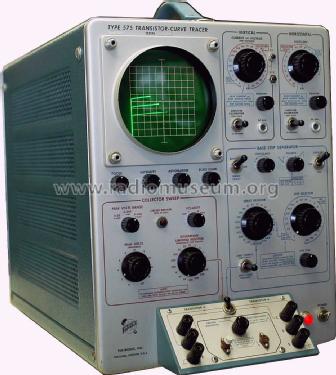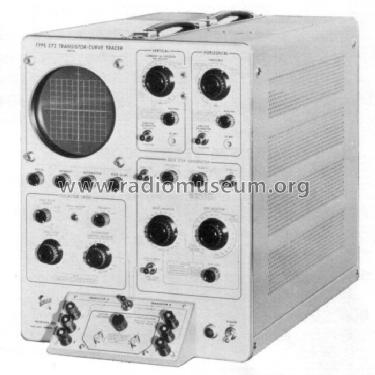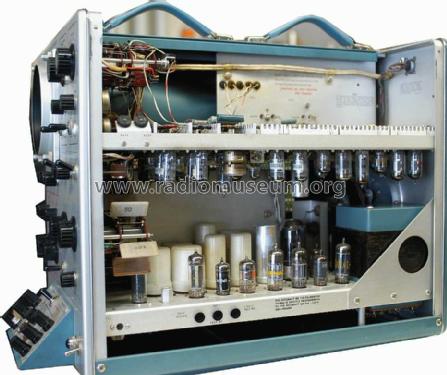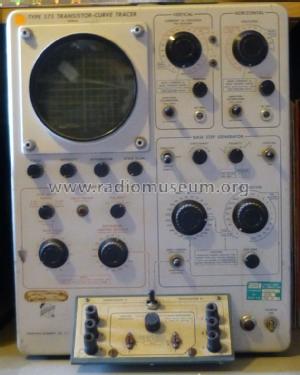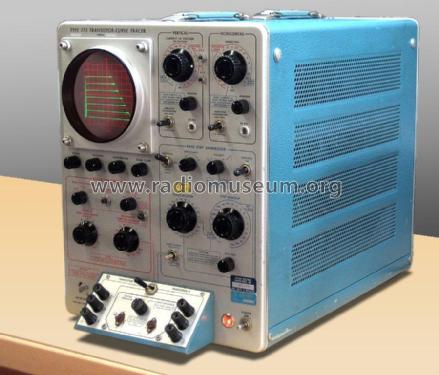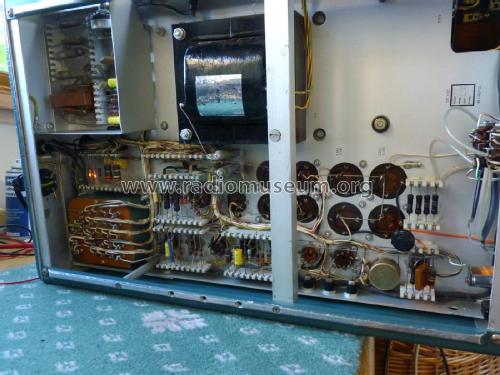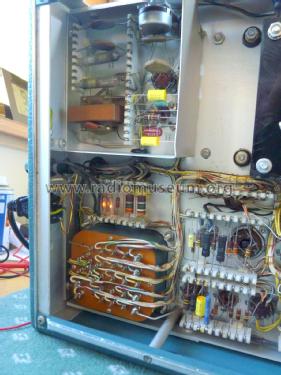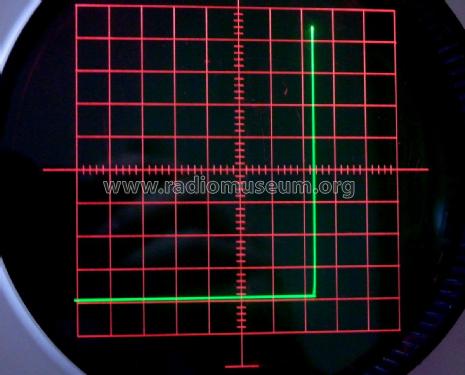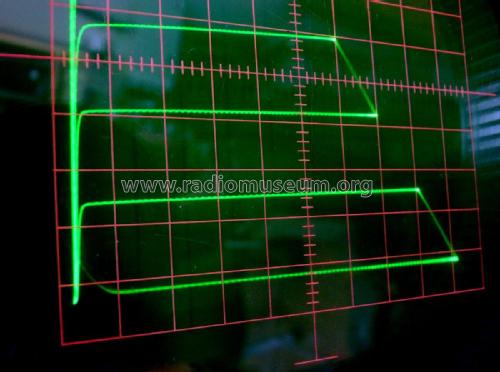Transistor Curve Tracer 575
Tektronix; Portland, OR
- Produttore / Marca
- Tektronix; Portland, OR
- Anno
- 1957–1971
- Categoria
- Strumento da laboratorio
- Radiomuseum.org ID
- 116198
- Numero di tubi
- 39
- Numero di transistor
- 2
- Semiconduttori
- Gamme d'onda
- - senza
- Tensioni di funzionamento
- Alimentazione a corrente alternata (CA) / 105-250 Volt
- Altoparlante
- - Per cuffie o amplificatori esterni
- Materiali
- Mobile di metallo
- Radiomuseum.org
- Modello: Transistor Curve Tracer 575 - Tektronix; Portland, OR
- Forma
- Soprammobile con qualsiasi forma (non saputo).
- Dimensioni (LxAxP)
- 13 x 16.7 x 24 inch / 330 x 424 x 610 mm
- Annotazioni
- The 575 Transistor Characteristic Curve Tracer to plot NPN, PNP and diode curves, simulating true operating conditions. Collector supply up to 10 A at 20 V and up to 1 A at 200 V. Base current up to 2.4 A. There is a companion 175 high current unit. There may be multiples of the valves listed. The CRT is not includedin the tube list.
- Peso netto
- 32 kg / 70 lb 7.8 oz (70.485 lb)
- Prezzo nel primo anno
- 975.00 $
- Bibliografia
- - - Manufacturers Literature
- Letteratura / Schemi (1)
- Funk-Technik (FT) (11/1959, S. 392 - 395 / Beschreibung)
- Autore
- Modello inviato da Emilio Ciardiello. Utilizzare "Proponi modifica" per inviare ulteriori dati.
- Altri modelli
-
In questo link sono elencati 386 modelli, di cui 374 con immagini e 92 con schemi.
Elenco delle radio e altri apparecchi della Tektronix; Portland, OR
Collezioni
Il modello Transistor Curve Tracer fa parte delle collezioni dei seguenti membri.
Letteratura
Il modello Transistor Curve Tracer è documentato nella seguente letteratura.
Discussioni nel forum su questo modello: Tektronix; Portland,: Transistor Curve Tracer 575
Argomenti: 1 | Articoli: 1
When I'd finished the restoration of this magnificent instrument, I noticed what appeared to be a dot-pattern on the trace. This was a mystery, as I didn't recall seeing this when the instrument was first powered.
Extensive investigations yielded nothing: there was no modulation on either the EHT, the grid or the X-plates. However, recalling that the colllector voltage sweep is derived directly from the mains supply (via transformers and an internal variac), I tried addng a 0.47uF X-rated capacitor across the output of the variac (shunt wiper to ground). This largely cured the problem, and confirmed that the noise was mains-derived. Subsequent correspondence with a gentleman in the USA who had exactly the same issue (blog at lazyelectrons.wordpress.com) confirmed the diagnosis; he traced the problem to a modern 9.5W LED lightbulb.
John Sykes, 01.Dec.18
